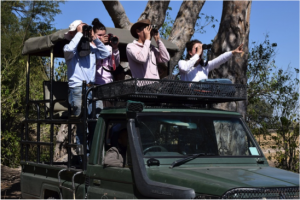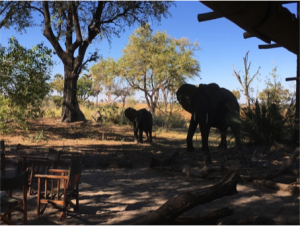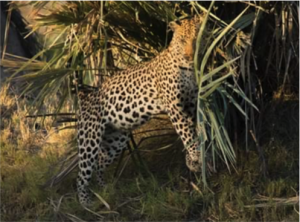After a successful field visit in the Okavango delta, students report back on their activities. In this post, we have Anna Nohre, a MSc Water: Science and Governance student writing about her experience.
At the beginning of July I was fortunate to partake in a Kings College London field trip to the Okavango Delta in Botswana. The Delta is a unique wetland environment that is habitat to a range of incredible animals and plants, which KCL is examining in association with the PLuS Alliance colleagues from University of New South Wales and Arizona State University .
Our group included staff and students from all three universities. A few days in Maun, on the edge of the delta, allowed time for team building, learning accurate surveying techniques, and studying the physical environment of the delta. I especially valued University of Botswana’s Dr Mike Murray-Hudson giving us a talk on the eco hydrological flows that create the delta environment. The annual flood of the delta is imperative to its health, as sediment and nutrients are transported and deposited across the plain. Thus disruption to the flow upstream in Angola or Namibia could have detrimental effects to the delta downstream. This insight gave me a better appreciation for the unique, but potentially fragile environment we were visiting.
The flight to our base camp in the Abu concession of the Okavango Delta was spectacular. We flew low at only one thousand feet and were able to see elephants and hippos at certain points. I was excited to finally be in the delta, seeing impala, warthogs, vultures, vervet monkeys and baboons on the short drive from the airstrip to camp.
Over the next few days we completed surveys of mammals, birds, and plant life, taking care to accurately digitise the results each day that will also help build up a body of knowledge for students and researchers of PLuSAlliance and at base camp. The surveys also gave me the opportunity to learn how to identify species, and by the end of the week it was satisfying to name numerous types of birds and antelope without consulting identification books.
Students working together for transect measurements and a Little Bee Eater being spotted
Certain birds such as the Little Bee Eater, African Fish Eagle, Lilac Breasted Roller, and the Fork-tailed Drongo were easily recognisable by their distinct features. While similar looking species of starlings were harder to differentiate, leading to some amusing mnemonics.
The trip was a treasure trove of information and has been highly informative for my dissertation. I made field observations throughout the week, including lecture notes on relevant topics. Furthermore, I was able to conduct interviews with water management experts who study the Okavango that will be my primary methodology within my project which focuses on application of the problem-shed concept to water management within the Okavango River basin.
A male leopard and distinct leopard footprints left around camp
It was amazing being so close to delta wildlife, even whilst in camp a highlight was one slightly nervous night when some elephants spent a few hours shaking nuts from the trees above our tent. Similarly waking up and discovering leopard tracks nearby was both disconcerting and exhilarating. We were lucky enough to also see a leopard later in the week.
Safe to say I will never have another experience quite like it, and I am so thankful to all the professors who shared their expertise and enthusiasm for their subjects, as well as all the staff at the Elephants without Borders camp who hosted us.





